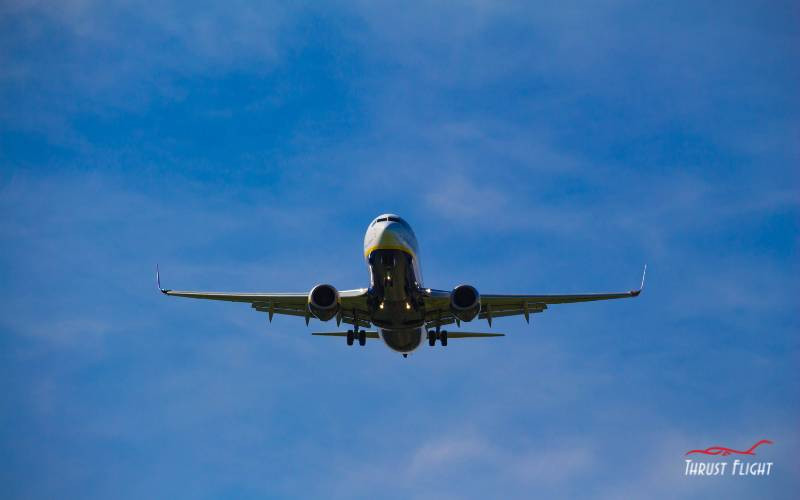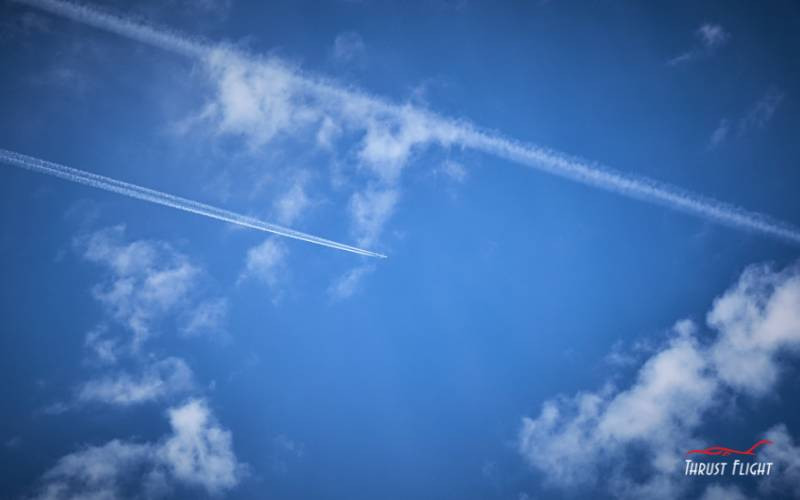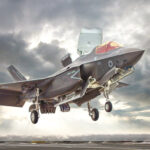How Fast Does A 787 Fly is a common question among aviation enthusiasts and travelers alike, and flyermedia.net is here to provide the answers. The Boeing 787 Dreamliner is known for its efficiency and advanced technology, but understanding its flight speed involves several factors. Explore with us all about the Dreamliner, from cruise speed to the factors influencing its velocity and many more.
1. What Is the Average Speed of a Boeing 787 Dreamliner?
The average speed of a Boeing 787 Dreamliner is approximately Mach 0.85, which translates to about 488 knots (562 mph or 888 km/h) at cruising altitude. This speed allows the 787 to efficiently cover long distances, making it a popular choice for international routes.
1.1. Understanding Cruise Speed
Cruise speed refers to the speed at which an aircraft flies during the majority of its journey, once it has reached its designated altitude. For the Boeing 787, this speed is optimized to balance fuel efficiency and travel time, ensuring that airlines can operate the aircraft economically while still providing timely service to passengers. According to Boeing’s official data, the 787 is designed to maintain this speed under normal operating conditions, highlighting its engineering for long-haul flights.
1.2. Factors Affecting Cruise Speed
Several factors can affect the actual cruise speed of a 787, including:
- Altitude: Higher altitudes offer less air resistance, which can allow the aircraft to achieve its optimal speed more efficiently.
- Wind Conditions: Tailwinds can increase ground speed, while headwinds can reduce it.
- Weight: A lighter aircraft will generally be able to reach and maintain its cruise speed more easily.
- Air Temperature: Colder air is denser, which can affect engine performance and airspeed.
1.3. Impact on Flight Time
The 787’s typical cruise speed significantly impacts flight times on long-haul routes. Its ability to sustain Mach 0.85 allows for quicker transcontinental and intercontinental flights, reducing travel time for passengers. For example, a flight from Los Angeles to Tokyo, typically around 5,474 nautical miles, can be completed in approximately 11 to 12 hours on a 787, depending on wind conditions and routing.
2. How Does the 787’s Speed Compare to Other Aircraft?
The 787’s speed is comparable to other modern wide-body aircraft, such as the Airbus A350, but it’s not the fastest in the sky. The now-retired Concorde, a supersonic jet, could reach speeds of over Mach 2, significantly faster than the 787.
2.1. Speed Comparison with Other Commercial Aircraft
| Aircraft Type | Cruise Mach | Knots | MPH |
|---|---|---|---|
| Boeing 787 Dreamliner | 0.85 | 488 | 562 |
| Airbus A350 | 0.85 | 488 | 562 |
| Boeing 777 | 0.84 | 483 | 556 |
| Airbus A380 | 0.85 | 488 | 562 |
| Boeing 737 MAX | 0.79 | 453 | 521 |
| Concorde (Retired) | 2.02 | 1,165 | 1,341 |
2.2. Speed and Efficiency
While the Concorde could fly at supersonic speeds, it was significantly less fuel-efficient than the 787. The 787 is designed for optimal fuel efficiency at its cruise speed, making it a more sustainable option for airlines. This balance between speed and efficiency is a key factor in the 787’s popularity among airlines operating long-haul routes.
2.3. Future Trends in Aircraft Speed
The aviation industry is continuously evolving, with ongoing research and development in aircraft design and propulsion systems. While there is renewed interest in supersonic travel, as evidenced by companies like Boom Supersonic, the focus remains on improving fuel efficiency and reducing environmental impact. Future aircraft may incorporate advanced technologies to achieve higher speeds while maintaining or improving fuel economy.
3. What Factors Influence the 787’s Flight Speed?
Several factors influence the flight speed of a Boeing 787 Dreamliner. These can be broadly categorized into environmental conditions, aircraft characteristics, and operational procedures.
3.1. Environmental Factors
- Wind Speed and Direction: Tailwind increases ground speed, while headwind decreases it.
- Air Temperature: Colder air is denser, improving engine performance.
- Altitude: Higher altitudes offer less air resistance, enabling faster speeds.
3.2. Aircraft Characteristics
- Weight: A lighter aircraft can reach and maintain speed more easily.
- Engine Performance: The efficiency and power output of the engines.
- Aerodynamic Design: The 787’s design reduces drag, improving speed and fuel efficiency.
3.3. Operational Procedures
- Climb Speed: Slower to gain altitude quickly.
- Cruise Speed: Optimized for fuel efficiency.
- Descent Speed: Varies based on approach and altitude restrictions.
3.4. Detailed Look at Climb Speed
During the initial climb, the 787 typically operates at a lower speed to maximize the rate of altitude gain. This is crucial for quickly reaching a safe altitude in case of emergencies. The climb speed is carefully managed by pilots to balance the need for rapid ascent with the aircraft’s performance capabilities.
3.5. Detailed Look at Descent Speed
During descent, the 787’s speed is managed to comply with air traffic control restrictions and ensure a safe approach to the airport. Descent speeds are lower near airports, often around 250 knots below 10,000 feet, and even slower during the final approach. Pilots use flaps and other devices to control speed and maintain lift.
 Boeing 787 Dreamliner landing
Boeing 787 Dreamliner landing
4. How Does Altitude Affect the 787’s Speed?
Altitude plays a crucial role in determining the 787’s optimal flight speed. As altitude increases, air density decreases, reducing air resistance and enabling the aircraft to fly faster with the same amount of engine power.
4.1. Air Density and Speed
The relationship between air density and aircraft speed is inverse. At higher altitudes, the air is thinner, resulting in less drag on the aircraft. This allows the 787 to achieve higher true airspeed (TAS) compared to indicated airspeed (IAS) at lower altitudes. Pilots must account for this difference to maintain the correct flight profile.
4.2. Optimal Altitude for 787
The optimal cruising altitude for a Boeing 787 is typically between 31,000 and 41,000 feet (approximately 9,450 to 12,500 meters). At these altitudes, the 787 can take full advantage of the reduced air density to achieve its maximum fuel efficiency and cruise speed. According to Boeing’s performance charts, the 787 is most efficient when flying at these altitudes, balancing speed and fuel consumption effectively.
4.3. Altitude and Fuel Efficiency
Flying at higher altitudes not only increases speed but also improves fuel efficiency. The thinner air reduces the engine’s workload, allowing it to operate more efficiently. This results in lower fuel burn per nautical mile, making the 787 a more economical choice for long-haul flights.
5. What Is the Maximum Speed of a 787?
The maximum operating speed (MMO) of the Boeing 787 is Mach 0.90. This is the highest speed at which the aircraft is certified to operate while maintaining structural integrity and controllability.
5.1. Understanding Maximum Operating Speed
The Maximum Operating Speed (MMO) is a critical safety parameter defined by the aircraft manufacturer and regulatory authorities. It represents the highest speed at which the aircraft can safely operate without risking structural damage or loss of control. Exceeding the MMO can lead to aerodynamic instability and potential failure of critical components.
5.2. Factors Limiting Maximum Speed
Several factors limit the maximum speed of the 787:
- Aerodynamic Design: The shape and structure of the aircraft are designed to perform optimally within a specific speed range.
- Engine Capabilities: The engines are designed to provide thrust within certain limits.
- Airframe Strength: The aircraft’s structure is built to withstand specific aerodynamic loads.
5.3. Safety Considerations
Operating at or near the MMO requires careful monitoring and control by the pilots. Modern aircraft are equipped with sophisticated systems that provide alerts and warnings if the aircraft approaches or exceeds the MMO. These systems help ensure that the aircraft operates within safe limits.
6. How Do Winds Affect the 787’s Ground Speed?
Winds have a significant impact on the 787’s ground speed. Tailwind increases ground speed, while headwind decreases it.
6.1. Tailwind Effects
When a 787 encounters a tailwind, the wind pushes the aircraft forward, increasing its ground speed. This means the aircraft covers more distance in the same amount of time, reducing the overall flight time. For example, a tailwind of 50 knots can increase the ground speed by 50 knots, resulting in a faster arrival time.
6.2. Headwind Effects
Conversely, when a 787 encounters a headwind, the wind pushes against the aircraft, reducing its ground speed. This means the aircraft covers less distance in the same amount of time, increasing the overall flight time. Headwinds can also increase fuel consumption, as the aircraft needs to work harder to maintain its airspeed.
6.3. Route Planning and Wind Optimization
Airlines carefully plan flight routes to take advantage of favorable wind conditions and minimize the impact of headwinds. This involves analyzing weather patterns and wind forecasts to select the most efficient route. Modern flight management systems (FMS) provide pilots with real-time wind data, allowing them to make adjustments to the flight path as needed.
 Boeing 787 Dreamliner in flight
Boeing 787 Dreamliner in flight
7. What Is the Role of Technology in Managing the 787’s Speed?
Advanced technology plays a crucial role in managing the 787’s speed, ensuring optimal performance and safety.
7.1. Flight Management Systems (FMS)
The Flight Management System (FMS) is a sophisticated onboard computer that integrates navigation, performance, and engine data. The FMS helps pilots plan and execute the flight, optimizing speed and fuel efficiency. It provides real-time information on wind conditions, altitude, and aircraft performance, allowing pilots to make informed decisions.
7.2. Autopilot Systems
The autopilot system assists pilots in maintaining the desired speed and altitude. It uses sensors and actuators to automatically adjust the aircraft’s control surfaces, ensuring smooth and efficient flight. Modern autopilot systems can also manage the aircraft’s speed during climb, cruise, and descent phases.
7.3. Engine Control Systems
The engine control systems regulate the performance of the aircraft’s engines, optimizing fuel consumption and thrust output. These systems monitor various parameters, such as engine temperature, pressure, and speed, to ensure that the engines operate within safe and efficient limits.
8. How Does the 787’s Design Contribute to Its Speed?
The 787’s innovative design significantly contributes to its speed and overall performance.
8.1. Aerodynamic Efficiency
The 787 features an aerodynamically efficient design that reduces drag and improves lift. This includes advanced wing design, raked wingtips, and smooth surface finishes. These features help the aircraft achieve higher speeds with less engine power, resulting in better fuel efficiency.
8.2. Lightweight Materials
The 787 is constructed with lightweight composite materials, such as carbon fiber reinforced polymer (CFRP). These materials reduce the aircraft’s overall weight, allowing it to reach and maintain higher speeds more easily. The use of lightweight materials also contributes to improved fuel efficiency.
8.3. Engine Technology
The 787 is powered by advanced turbofan engines that provide high thrust and low fuel consumption. These engines are designed to operate efficiently at high altitudes and speeds, contributing to the aircraft’s overall performance.
9. Can the 787 Fly Faster Than Its Standard Cruise Speed?
Yes, the 787 can fly faster than its standard cruise speed, but doing so may not be optimal for fuel efficiency or passenger comfort.
9.1. Factors Allowing Increased Speed
The 787 has a maximum operating speed of Mach 0.90, which is higher than its typical cruise speed of Mach 0.85. Factors that might allow the aircraft to fly faster include:
- Tailwinds: Strong tailwinds can increase ground speed.
- Air Traffic Control: ATC may request a higher speed to maintain separation.
- Operational Needs: In rare cases, airlines may need to make up time.
9.2. Potential Drawbacks
Flying at higher speeds than the standard cruise speed can have several drawbacks:
- Increased Fuel Consumption: Higher speeds require more engine power, leading to increased fuel burn.
- Reduced Range: Increased fuel consumption reduces the aircraft’s range.
- Passenger Comfort: Higher speeds can result in increased turbulence and noise.
9.3. Situations Where Increased Speed Is Justified
There are situations where flying faster than the standard cruise speed may be justified:
- Medical Emergencies: To reach a hospital faster.
- Schedule Recovery: To make up for delays.
- Severe Weather Avoidance: To outrun a storm.
10. How to Find More Information About Aircraft Speeds on flyermedia.net
For more detailed information about aircraft speeds, including the Boeing 787 and other commercial aircraft, flyermedia.net is your go-to resource.
10.1. Navigating flyermedia.net
Visit flyermedia.net and use the search bar to find articles, guides, and news related to aircraft speeds. The site offers comprehensive information on various aircraft types, flight dynamics, and aviation technology.
10.2. Specific Topics Covered
On flyermedia.net, you can find information on:
- Aircraft Performance: Detailed specifications and performance data for various aircraft.
- Aviation News: Updates on the latest developments in aviation technology and regulations.
- Flight Training: Resources for pilots and aviation enthusiasts.
10.3. Engaging with the Community
flyermedia.net also offers a platform for aviation enthusiasts to connect and share information. Join the community to ask questions, participate in discussions, and stay updated on the latest trends in the aviation industry.
Understanding how fast a 787 flies involves considering various factors, from environmental conditions to aircraft design. The Boeing 787 Dreamliner is an efficient and technologically advanced aircraft, capable of reaching impressive speeds while maintaining optimal fuel efficiency. For more information and insights into the world of aviation, visit flyermedia.net today.
Are you ready to take your passion for aviation to new heights? Visit flyermedia.net now to discover comprehensive resources on flight training, airline pilot salaries, and the latest aviation news. Whether you’re an aspiring pilot or an aviation enthusiast, flyermedia.net has everything you need to stay informed and inspired. Don’t wait—explore the skies with flyermedia.net today Contact us at Address: 600 S Clyde Morris Blvd, Daytona Beach, FL 32114, United States or Phone: +1 (386) 226-6000.
Frequently Asked Questions (FAQ)
1. What is the typical cruise altitude for a Boeing 787 Dreamliner?
The typical cruise altitude for a Boeing 787 Dreamliner is between 31,000 and 41,000 feet.
2. How does air temperature affect the speed of a 787?
Colder air is denser, improving engine performance and potentially increasing the aircraft’s speed.
3. What is the maximum operating speed (MMO) of the Boeing 787?
The maximum operating speed of the Boeing 787 is Mach 0.90.
4. Can tailwinds increase the ground speed of a 787?
Yes, tailwinds can significantly increase the ground speed of a 787, reducing flight time.
5. How does the FMS help manage the 787’s speed?
The Flight Management System (FMS) integrates navigation, performance, and engine data to optimize speed and fuel efficiency.
6. What materials are used in the 787 to reduce its weight and improve speed?
The 787 is constructed with lightweight composite materials, such as carbon fiber reinforced polymer (CFRP).
7. Is it possible for a 787 to fly faster than its standard cruise speed?
Yes, but doing so may increase fuel consumption and reduce range.
8. How do headwinds affect the fuel consumption of a 787?
Headwinds increase fuel consumption as the aircraft needs to work harder to maintain its airspeed.
9. What are the main design features that contribute to the 787’s speed?
The 787 features an aerodynamically efficient design, lightweight materials, and advanced engine technology.
10. Where can I find more information about aircraft speeds and aviation technology?
Visit flyermedia.net for comprehensive information on aircraft speeds, aviation news, and flight training resources.
